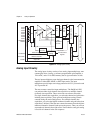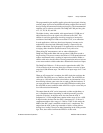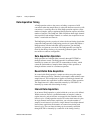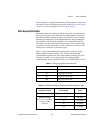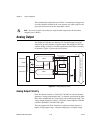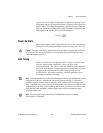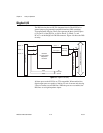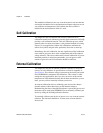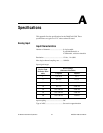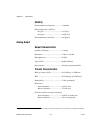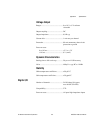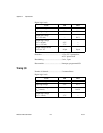
© National Instruments Corporation 5-1 DAQCard-1200 User Manual
5
Calibration
This chapter discusses calibrating the DAQCard-1200. NI-DAQ includes
calibration functions for performing all the steps in the calibration process.
Calibration refers to the process of minimizing measurement and
output voltage errors by making small circuit adjustments. On the
DAQCard-1200, these adjustments take the form of writing values to
onboard calibration DACs (CalDACs).
Some form of device calibration is required for most applications. If you do
not calibrate your device, your signals and measurements could have very
large offset, gain, and linearity errors.
Loading Calibration Constants
The DAQCard-1200 device is factory calibrated at approximately 25 °C
to the levels indicated in Appendix A, Specifications. The associated
calibration constants—the values that were written to the CalDACs to
achieve calibration in the factory—are stored in the onboard nonvolatile
memory (EEPROM). Because the CalDACs have no memory capability,
they do not retain calibration information when the device is powered
down. Loading calibration constants refers to the process of loading the
CalDACs with the values stored in the EEPROM. NI-DAQ determines
when this is necessary and does it automatically.
The EEPROM has a user-modifiable calibration area in addition to the
permanent factory calibration area. Hence, you can load the CalDACs with
values either from the original factory calibration or from a calibration that
you subsequently performed.




